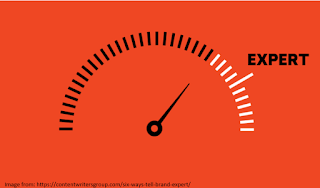Pick your best player – the one
everyone wants – the one you thought you’d never trade. Now give that player a
pat on the back, a kiss on the cheek, and wave his ass goodbye. At 2-4 or 1-5,
your playoff chances are dwindling. Lose this week and drop to 2-5 or 1-6, and
you can pretty much pack it in. It’s like the little girl in Remember the
Titans says to her dad (Bill Yoast), the defensive coordinator – “Now’s not
the time to be proud, Pa..” (or something like that, you get the point.)
One guy doesn’t make a team in real-life
football, nor does it in fantasy. There’s a good chance you are 1-5 for a
reason – likely because you have multiple holes on your roster.
Don’t get me wrong, having a superstar
player on your team like Julio, D-Hop, Nick Chubb, or Le’Veon is great. You
know what else is great? Having a team that isn’t full of holes and actually
wins the imaginary games we play. And seriously, if you’re 2-4, or 1-5, and
your team legitimately has problems, what do you really have to lose? Take a
chance, see what people are willing to give up for your stud. People will
overpay. They always do.
This doesn’t mean that every team with
a poor record should trade their stud. Some teams with poor records are in legitimately
good shape, with their slow start being a result of random chance and unlucky scheduling.
There’s no need to blow up that kind of team just because the record doesn’t reflect
the team’s talent. Hold tight, and be patient in the process.
But, for every team that has a poor
record without any real holes on their roster, there are five others whose poor
records are a direct reflection of their lack of across-the-board production.
These are the teams that need to let go of their best player. These are the
teams that would benefit from a 3-for-1.
There’s someone out there who will
give up 3 good players for just one great one in return. Every year, in every
league, there always is – you just have to find them.
You should target the teams at the top
– the teams who are sitting pretty at 4-2, 5-1, or 6-0. Those are the teams who
are feeling overly cocky and are most likely to overpay.
The idea is to give up your stud in return
for a player who’s almost as good as your stud plus two other
players who will fill holes on your roster. For example, let’s say you have a
top-5 RB, but your WR2 and TE production is terrible. If you can acquire a
top-15 RB in return for your top-5 back, plus a top-20 WR and a decent TE, that
would probably make sense, wouldn’t it? You may lose a little bit of
production by going from a top-5 RB to a top-15 one, but the extra WR & TE production
should more than make up for that loss.
This isn’t the only way to turn around
a lost season, but it’s probably your best bet because people will usually
overpay to acquire a stud. The stud you give up will still have his blow-up
weeks for the team that you trade him to, but the guy you get in return will be
just as good most weeks, and you will benefit from the added production
across the other slots on your roster. Who knows, it might even allow you to
make a run and sneak into the playoffs as an 8 seed.
Conversely, if you’re on the other end
of the spectrum –sitting pretty at 4-2, 5-1, or even 6-0, with extra assets
just sitting on your bench, don’t be afraid to package ‘em up and go after that
superstar languishing away on a 1-5 team. You are going to have to overpay, but
don’t be afraid to sacrifice some of your middle-tier bench options to upgrade
a starting slot. With a solid record, you’re likely already looking at a
playoff appearance. The goal as a team with a winning record at this point should
be to acquire as much top-level talent as possible – such players are rare
commodities. You will be able to replenish your bench options that you trade
away with guys that you find off waivers. Such middle-tier players are far more
readily available. Your depth will absolutely take a hit, but sacrificing your
depth in order to acquire studs is the kind of strategy championship teams are
made of.




